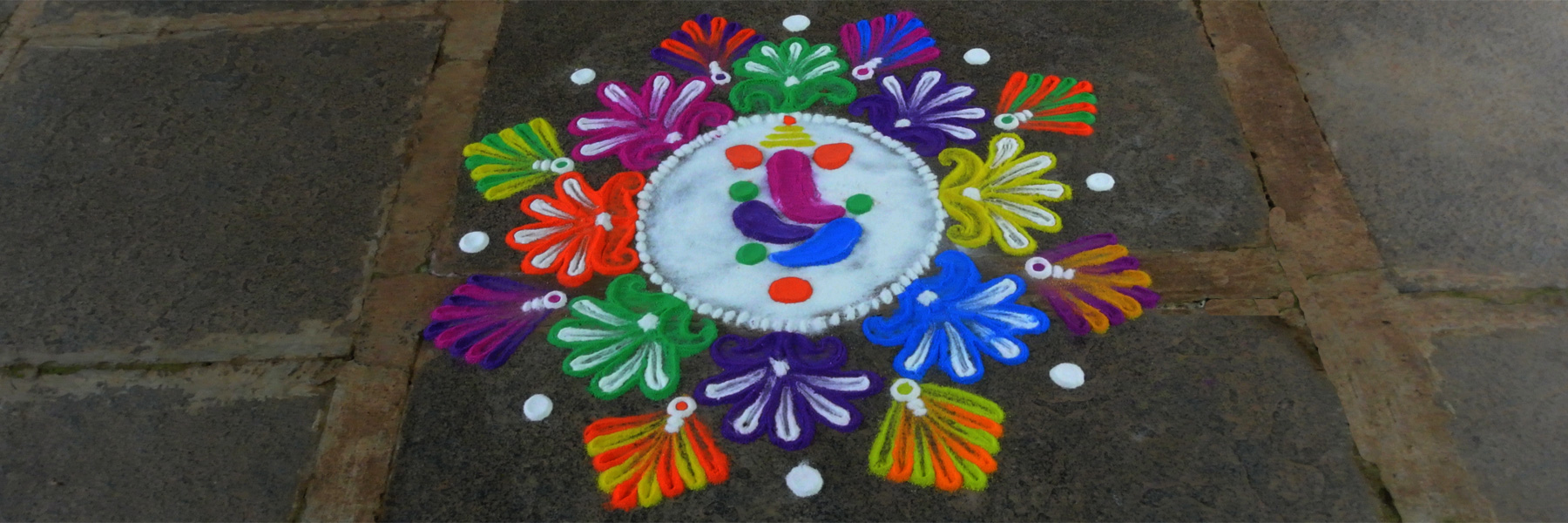Havyaka Visual arts
Visual Art is an umbrella term used for various artistic creations that generate emotions through skills. Visual arts have a long history, and are extremely diverse. However, our traditional interest mainly focuses on drawings on walls (wall painting / murals), on aarati plate, and in the form of rangavali or rangoli.
Wall painting
Traditional wall painting or drawing on wall depicts more of nature and religious symbols. These are also a communication tool - to communicate the message that we believe in. This ancient artwork can be seen in age old houses especially in pooja room, and the wall surrounding the main door(s).
Rangoli (Rangavali)
Rangoli or Rangavali in Sanskrit - rang (colour) and aavali (row), is intrinsic to Havyaka culture and traditions. Rangoli carries connotations of collective wisdom, spontaneity and simplicity. The beauty of this art is that it is drawn freely without the use of any tools like a ruler, or brush. The artwork relies on expert fingers that move freely in an artistic manner, so akin to that of a skilled artisan. Beginning with the auspicious dot, the symbols go on expanding to form a line and other geometrical shapes.
This beautiful and captivating piece of art form is practiced as a part of our daily routine. The traditional places to draw rangolis are pooja room, the threshold of the house, in front of Tulasi katte, and the entrance. While all rangolis are beautiful to look at, the drawing of rangoli patterns is often combined with rituals associated with auspicious occasions. None of our rituals are complete without this divine folk art.
Rangoli is drawn with dots or without dots (free hand). To create the beautiful rangoli designs and patterns we use stone powder, arishina (haldi/turmeric powder), kumkum (vermillion), colours, and flowers. Usually colour rangoli powder is prepared by mixing turmeric powder, and vermillion with white rangoli powder in various proportions.
Aarati batlu (Aarati thali/plate)
Aarati is a small flame from camphor or wick dipped in ghee or oil, which is placed on a plate and waved before the deity in circular motion. During special occasions like festivals, weddings we decorate aarati plate with various designs. Drawings are drawn on a metal plate by dipping a small grass stick or matchstick in oil, honey, or liquid jaggery. Rava (semolina) or rangoli powder is sprinkled on the design made. The plate is gently shaken and semolina sticks to the oil and the excess is removed. Rice, flour, and grains are also used in place of semolina. Flowers and flower petals are also used in Aarati plate design to make it more colourful and bright.
Photo Gallery
